This article was medically reviewed by Troy A. Miles, MD. Dr. Miles is an Orthopedic Surgeon specializing in Adult Joint Reconstruction in California. He received his MD from the Albert Einstein College of Medicine in 2010, followed by a residency at the Oregon Health & Science University and fellowship at the University of California, Davis. He is a Diplomat of the American Board of Orthopaedic Surgery and is a member of the American Association of Hip and Knee Surgeons, American Orthopaedic Association, American Association of Orthopaedic Surgery, and the North Pacific Orthopaedic Society.
There are 11 references cited in this article, which can be found at the bottom of the page.
This article has been viewed 65,927 times.
Knee pain is a common complaint among Americans and affects all ages, but often for different reasons. In younger people, knee pain is usually the result of an injury, such as a sprained ligament, tendinitis or torn cartilage. In older people, medical conditions such arthritis, gout and infections are more common causes of knee pain.[1] Most types of knee pain can be managed at home with self-care treatments; however, in some cases, medical intervention is needed, including surgical repair.
Steps
Fixing Knee Pain at Home
-
1Lose weight if you're overweight. People who are overweight, particularly the obese, experience more knee pain from increased compression on the joints. The increased pressure wears out the knees with time (arthritis) and also leads to more irritation and injury to ligaments and tendons. In addition, obese people are more likely to develop flat feet and fallen arches, which promotes "knock knees" and puts more strain on the outer (lateral) part of the knee joints. As such, losing weight takes pressure off your knee joints and reduces the likelihood of pain.
- The safest and most effective way to lose weight is by reducing caloric intake by 500 calories per day can lead to four pounds of lost fat per month.[2] While exercise is an important part of a healthy lifestyle, diet is far important and has a much greater impact when it comes to weight loss.
- Slow increase cardiovascular exercise (light walking, stair climber or cycling) while concurrently reducing your intake of calories.
-
2Exercise on a regular basis. Exercise is important for strengthening the muscles around your knees, which act as secondary "shock absorbers". Consequently, the stronger the muscles are around your knees (quadriceps, hamstring and calf muscles), the more impact they can absorb.[3] However, not all exercise is beneficial for your knees, especially if you already have knee pain. High-impact exercises such as jogging, running, tennis and stair climbing can cause more knee pain. Thus, stick to basic walking and cycling, either outside or inside your gym.
- Gym exercises that increase the strength of your quadriceps (thigh muscles), hamstrings and calves without significantly impacting your knee joints include: mini-squats, leg presses and leg extensions. These exercises should be painless and done with knee flexion — not more than 45 degrees.
- Talk to a trainer or physical therapist about isometric knee exercises, such as an assisted knee flexion, which do not require you to move the knee joint.
- Switch from high-impact activities to swimming and water aerobics. The buoyancy of the water reduces the stress on your knees, but still works out your leg muscles. Furthermore, swimming is a great way to lose weight.
Advertisement -
3Apply ice to acute knee pain. If your knee pain is sudden (acute) from trauma and involves inflammation, then using some form of cold therapy (crushed ice, ice cubes, frozen gel packs, veggies from the freezer) is the best approach for reducing pain and swelling.[4] Ice constricts (vasoconstricts) blood vessels close to the skin's surface, which reduces blood flow — important for controlling inflammation. Tearing the ligaments or meniscus (cartilage) of the knee are common acute injuries and typically cause sharp and throbbing pains.
- Apply cold therapy to your painful and inflamed knee for between 10–15 minutes or until numb. Start with three to five times per day until the symptoms fade away.
- Wrap crushed ice or frozen gel packs in a thin cloth before placing it on your skin — it'll help prevent frostbite and skin irritation.
- Place the cold therapy directly over the most painful and inflamed part of your knee(s). Usually that's either the sides or front of the knee joint, which is where the ligaments or tendons are.
-
4Apply moist heat to chronic knee pain. Chronic (long term) knee pain is usually the result of arthritis, particularly the "wear and tear" type called osteoarthritis (OA). OA involves dull, achy pain, morning stiffness and often lots of creaking or cracking sounds while walking, but not a lot of swelling. Therefore, applying moist heat is a better idea than ice because the warmth expands (dilates) blood vessels near the knee, improves blood circulation and helps to reduce stiffness. Microwavable herbal bags (filled with bulgur wheat or rice), especially ones infused with relaxing aromatherapy (lavender), are great sources of moist heat for your knees.
- Microwave the bags for a few minutes and then apply them first thing in the morning or after long periods of disuse for between 15–20 minutes, three to five times daily. Avoid dry electric sources of heat because it can dehydrate the skin and muscles around your knees.
- As an alternative, soak your lower body in a warm Epsom salt bath, which can help reduce knee stiffness and pain. Epsom salt is rich in magnesium.
- Heat therapy is likely not beneficial for knee conditions that involve lots of inflammation, such as rheumatoid arthritis, psoriatic arthritis, gout attacks or bursitis.
-
5Take over-the-counter (OTC) medications. Consider taking OTC anti-inflammatories, such as ibuprofen (Advil, Motrin), naproxen (Aleve) or aspirin for short-term relief of acute or chronic knee pain.[5] As an alternative, some OTC painkillers, such as acetaminophen (Tylenol), are effective for mild-to-moderate knee pain caused by arthritis, but they don't impact inflammation.[6]
- NSAIDs tend to be hard on the stomach and kidneys, so don't rely on them for long periods of time (more than a few weeks). To reduce the risk of stomach irritation, always take NSAIDs with food or on a full stomach.
- Painkillers can be hard on the liver, so always follow recommendations on the bottle or from your doctor. Never take painkillers with alcohol.
- A safer option (but not always as effective) is applying a cream/gel that contains NSAIDs or acetaminophen to your painful knee.
- More natural pain relieving creams often contain menthol or capsaicin, which essentially distract your brain from the knee pain by making the surrounding skin tingle.
-
6Consume more omega-3 fats. Dietary factors can play a big role in joint pain, especially weight-bearing joints such as the knees. For example, diets high in refined sugars tend to promote joint pain, whereas diets rich in omega-3 fats tend to reduce pain because they have anti-inflammatory effects. Omega-3 fatty acids can be particularly helpful for combating knee pain caused by arthritis.
- The main omega-3 fats found in food are abbreviated as ALA, EPA and DHA, although the standard American diet tends to be deficient in these.
- Fatty cold water fish, plants and oils made from nuts are the main sources of omega-3 fatty acids.
- EPA and DHA are found in salmon, mackerel and tuna, whereas ALA is found in flaxseed oil, canola oil, soy beans, hemp seeds, pumpkin seeds and walnuts.
- As an alternative, supplement with fish oils or seed-based oils to combat your knee pain. Aim for 1,000 mg of omega-3 fats, 2-3X per day.
-
7Take glucosamine and chondroitin supplements. Glucosamine and chondroitin are compounds naturally found in all your joints. Glucosamine is needed for joint lubrication, whereas chondroitin is needed for the cartilage to absorb water and be a good shock absorber. Both compounds can be taken as supplements and the research suggests they may help reduce arthritic pain, especially in large weight-bearing joints like the knees.[7] [8] [9]
- In addition to pain relief, glucosamine also increases knee mobility in mild-to-moderate cases of OA.
- Glucosamine sulfate is usually made from shellfish, which can trigger allergies. A safer type may be glucosamine hydrogen, which is made from veggie sources.
- To combat knee pain, take about 500 mg of a combined supplement three to four times per day — you can get liquid supplements instead of pills or powder. Remember that it often takes at least two months to get significant results.
Getting Medical Treatment for Knee Pain
-
1See your doctor for prescription medications. Make an appointment with your doctor so he can diagnose the cause of your knee pain. Your doctor will likely do a physical exam, take x-rays and order blood tests to confirm a diagnosis. If your knee pain is not alleviated by home remedies or OTC medications, then talk to your doctor about getting a stronger prescriptions drug.
- COX-2 inhibitors (celecoxib) are particularly strong NSAIDs that have less risk of stomach problems.[10] They are usually prescribed for OA of the knee.
- Disease-modifying anti-rheumatic drugs (DMARDs) are typically used to combat the pain and reduce the progression of rheumatoid arthritis by dampening down your immune system.[11] The most common DMARD is methotrexate.
-
2Consult with your doctor about steroid injections. An corticosteroid injection into the knee can quickly reduce inflammation and pain, and allow for better range of motion.[12] Corticosteroids are hormones that act as strong anti-inflammatories. They are usually injected into joints by orthopedic surgeons under local anesthesia. The most commonly used medications are cortisone, prednisolone, dexamethasone and triamcinolone. The effects of the shots are almost always short-term — the pain relief will last from a few weeks to many months typically.
- The number of corticosteroid injections you can get is limited to one every three months, because they can cause the knee to deteriorate more quickly.
- Potential risks of corticosteroid injections include: infection, bleeding, tendon weakening, local muscle atrophy and nerve irritation/damage.
- Corticosteroid injections can be fairly expensive if your health insurance doesn't cover it, so check with your insurance provider.
-
3Try acupuncture therapy. Acupuncture is an ancient healing therapy based on the principles of traditional Chinese medicine. It involves sticking very fine needles into specific energy points within your skin in efforts to reduce pain, combat inflammation and stimulate healing.[13] Some research indicates that acupuncture can relieve some types of knee pain and improve joint function, particularly in people with OA. Acupuncture is relatively painless and has an excellent safety record, so it may be worth a try if your budget allows it — it isn't usually covered under most health insurance plans.
- Acupuncture appears to alleviate pain and inflammation by triggering the release of hormones, such as serotonin, and other compounds called endorphins.
- Acupuncture is now practiced by many more types of health professionals, including some medical doctors, chiropractors, naturopaths, physical therapists and massage therapists — whoever you choose should be certified by The National Certification Commission for Acupuncture and Oriental Medicine (NCCAOM).
-
4Consider surgery as a last resort. If your knee pain persists after trying a variety of home remedies, medications and alternative treatments, then ask your doctor about the pros and cons of surgery. Surgery should only be considered in severe cases of arthritis and to repair significant damage, such as ruptured ligaments and tendons, torn meniscus and broken bones. There are many types of surgical procedures, including arthroscopic surgery as well as partial and total knee replacements.[14]
- Arthroscopic surgery involves inserting a small cutting instrument with an attached camera (arthroscope) into the knee joint in order to clean up pieces of torn cartilage and repair ripped ligaments. Recovery time is pretty quick (1-2 weeks), depending on the extent of knee damage.
- A synovectomy involves removing the inflamed lining of a knee joint afflicted with rheumatoid arthritis.
- An osteotomy involves realigning the bones that form the knee joint — the tibia and femur.
- An arthroplasty is total or partial knee replacement surgery. The damaged cartilage/bone is cut out and replaced by an artificial joint made from metal and plastic.
References
- ↑ http://www.mayoclinic.org/diseases-conditions/knee-pain/basics/definition/con-20029534
- ↑ http://www.mayoclinic.org/healthy-lifestyle/weight-loss/in-depth/calories/art-20048065
- ↑ http://www.pamf.org/sports/king/osteoarthritis.html
- ↑ https://www.urmc.rochester.edu/encyclopedia/content.aspx?ContentTypeID=1&ContentID=4483
- ↑ http://orthoinfo.aaos.org/topic.cfm?topic=a00212
- ↑ http://www.mayoclinic.org/diseases-conditions/osteoarthritis/basics/treatment/con-20014749
- ↑ http://www.mayoclinic.org/drugs-supplements/glucosamine/evidence/hrb-20059572
- ↑ http://ard.bmj.com/content/early/2015/01/14/annrheumdis-2014-206792.long
- ↑ http://orthoinfo.aaos.org/topic.cfm?topic=a00212
- ↑ http://orthoinfo.aaos.org/topic.cfm?topic=a00212
- ↑ http://orthoinfo.aaos.org/topic.cfm?topic=a00212
- ↑ http://orthoinfo.aaos.org/topic.cfm?topic=a00212
- ↑ http://www.mayoclinic.org/tests-procedures/acupuncture/basics/definition/prc-20020778
- ↑ http://www.mayoclinic.org/diseases-conditions/knee-pain/basics/treatment/con-20029534
- ↑ http://www.arthritis.org/about-arthritis/where-it-hurts/knee-pain/treatment/knee-injection.php

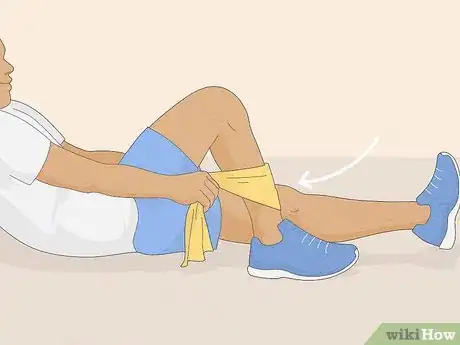
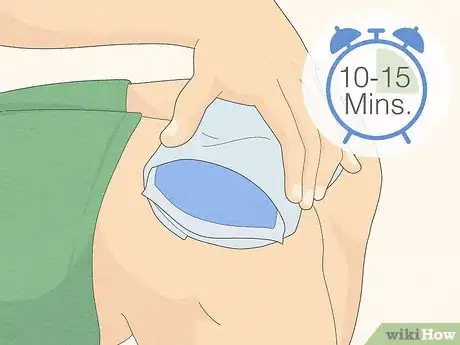

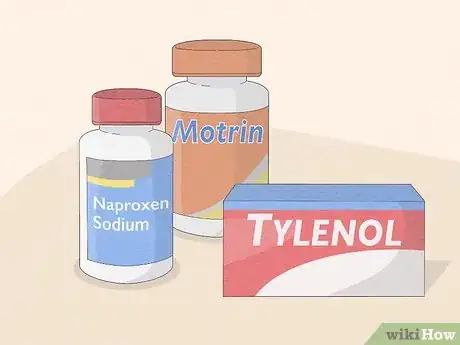
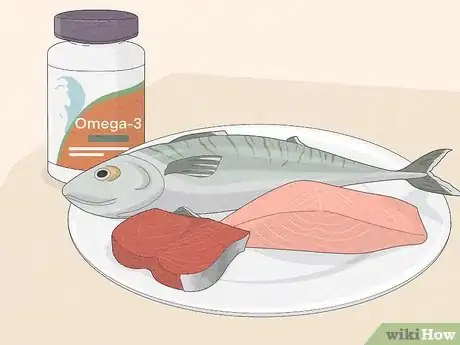
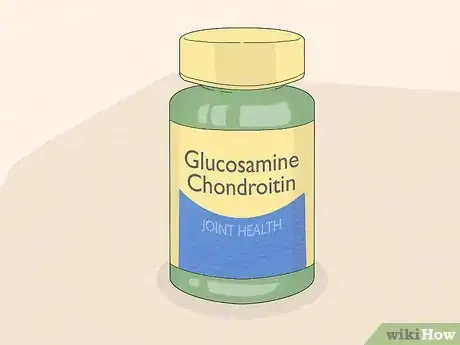
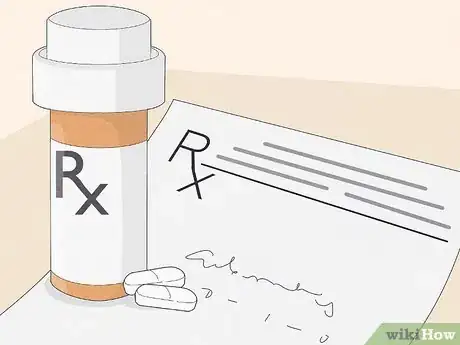
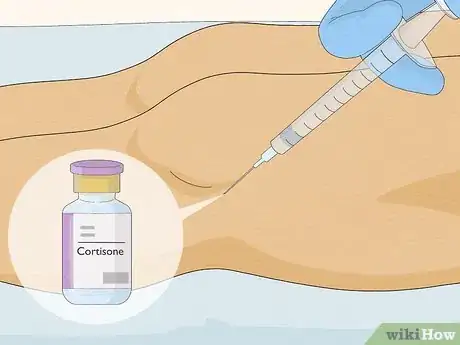
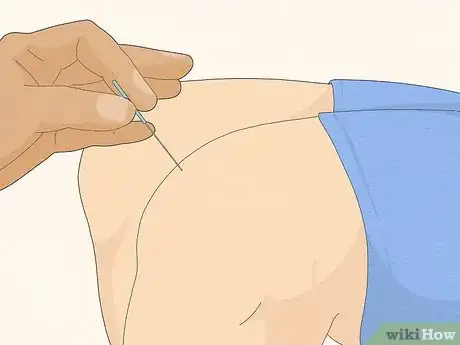

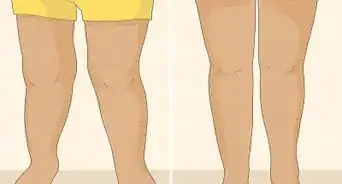
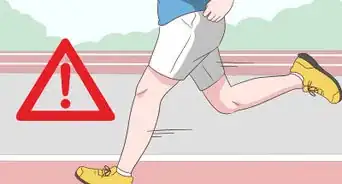


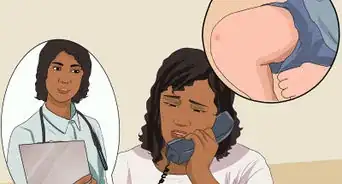


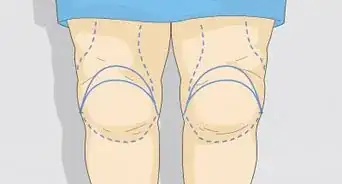

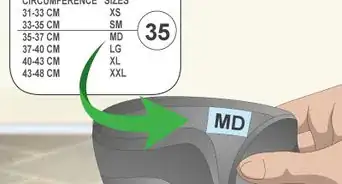
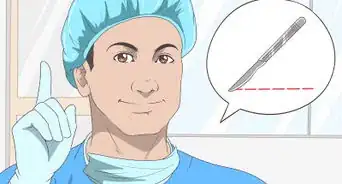
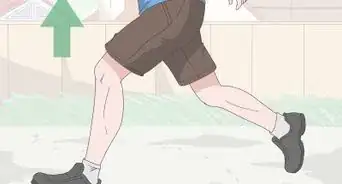

















































Medical Disclaimer
The content of this article is not intended to be a substitute for professional medical advice, examination, diagnosis, or treatment. You should always contact your doctor or other qualified healthcare professional before starting, changing, or stopping any kind of health treatment.
Read More...